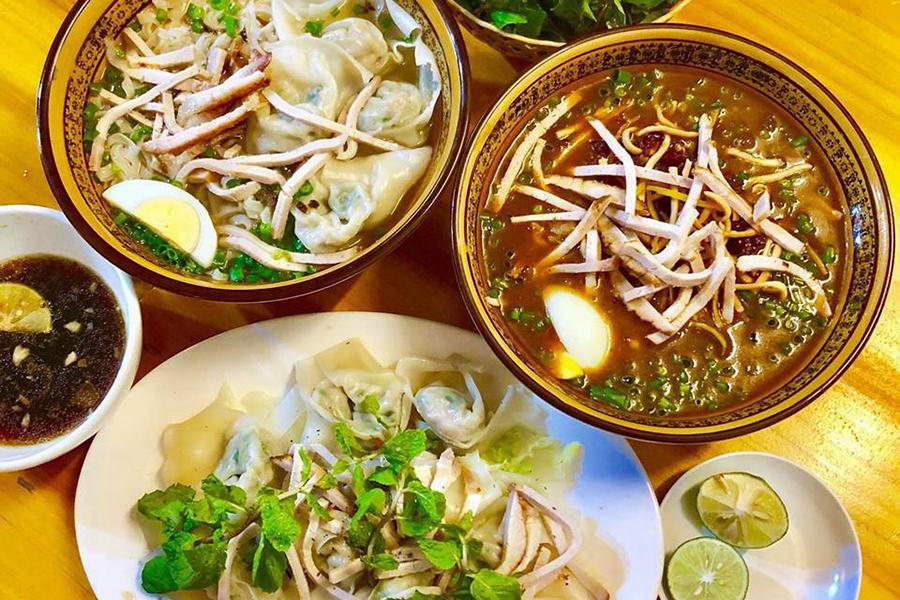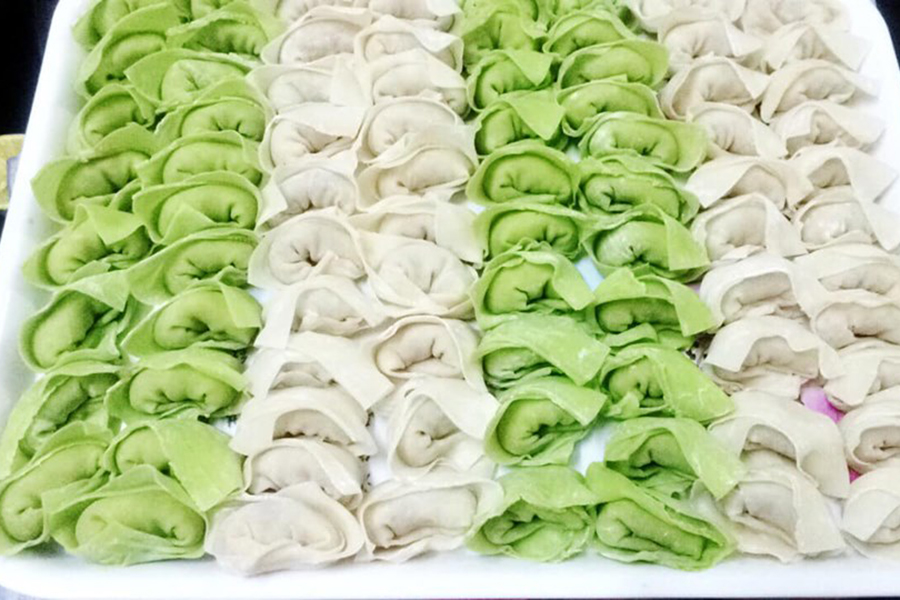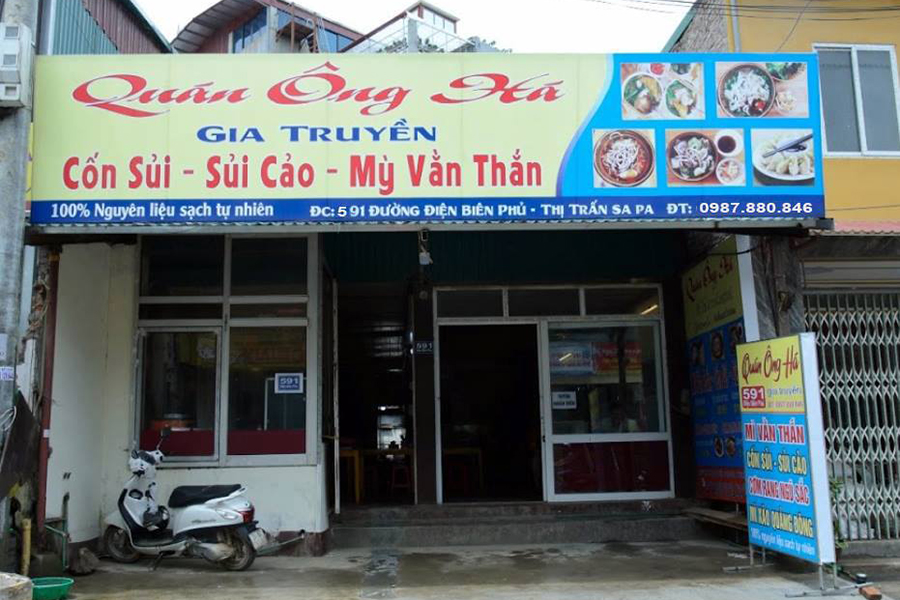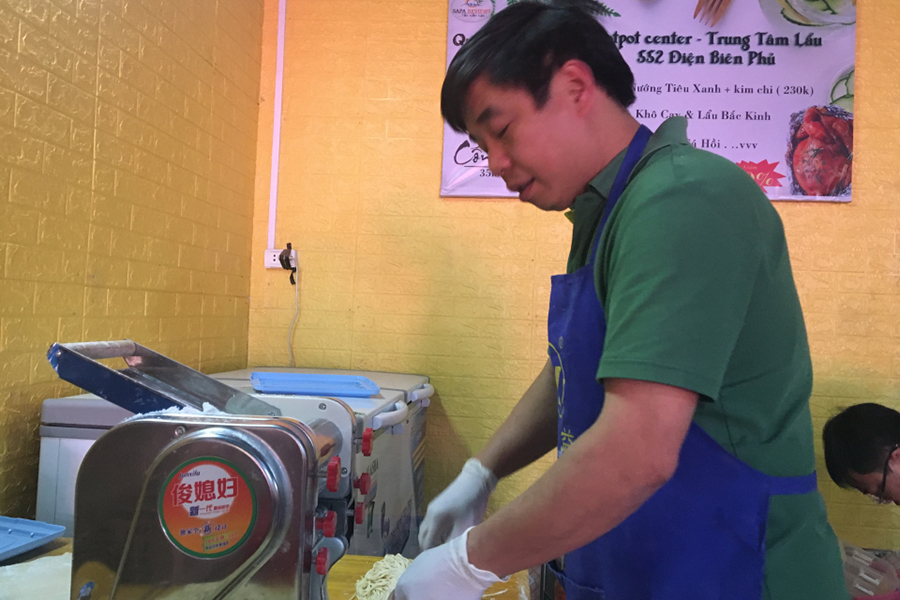
Sapa's "Cốn Sủi" - a specialty with characteristics of the Northwest highlands
Cốn sủi - an unforgettable specialty of Sapa
Although cuốn sủi Sapa has only emerged in recent years, it has quickly won the hearts of both young and adventurous food enthusiasts. Originally a dish of the Chinese community, it became popular in the region due to active trade along the border, gradually evolving into a local specialty of Lào Cai province.

The name "cuốn sủi" may sound like "sủi cảo," but it doesn't contain dumplings. Cuốn sủi, in fact, refers to a dish that consists of flat, soft rice noodles, similar to those used in Hanoi's pho. However, what sets it apart is the small amount of sauce, akin to Hue's bánh canh or Saigon's bún riêu, just enough to moisten the noodles.

The pristine white rice noodles are meticulously placed at the bottom of a bowl. On top of the noodles, you'll find crunchy pieces of deep-fried sweet potato and taro, various spices, well-cooked beef, thinly sliced pork, boiled quail eggs, a pinch of fine pepper, and finely crushed peanuts.
The most crucial element of cuốn sủi Sapa is the rich broth, slowly brewed from pig's bone marrow for approximately five hours. It is flavored with fragrant herbs like cinnamon, star anise, and local herbs from the Northwestern forests. The perfect cuốn sủi's broth is mildly sweet, neither too strong nor too bland, providing an aromatic, warm, and flavorful experience.
When eating, you can customize it to your liking with additional herbs, chili slices, and hot sauce. It's often served with pickled cabbage to add a sweet and sour dimension to the dish, enhancing its overall appeal.
A bowl of steaming cuốn sủi Sapa, rich in flavors and aromas, is a delightful experience. With each bite, you'll savor the chewiness of the rice noodles, the crunch of peanuts, the tenderness of meat, and the blend of flavors from the spices and herbs. This dish is typically enjoyed in the chilly Sapa climate, making it a perfect choice for a warm and satisfying breakfast that energizes you for a day of exploration.
What makes cuốn sủi special is that it can be enjoyed all year round, whether you're visiting Sapa in the winter or summer. Once you've tried it, you won't forget its unique and delectable taste, making it a top choice for young travelers when visiting the region.
Where to enjoy “Cốn sủi” Sapa?
In Sapa, although there aren't too many restaurants specializing in cuốn sủi, you can easily find them with the guidance of the locals. You can even ask the hotel reception to order it for you, as this dish is familiar to the local population.

Most travelers, however, tend to stop at Ông Há's restaurant to savor cuốn sủi. Originating from a successful Chinese restaurant in Lào Cai City, Ông Há's Sapa branch at 591 Điện Biên Phủ Street has achieved a similar level of fame. They serve cuốn sủi at a fixed price of 35,000 VND per bowl, which remains the same even during the Lunar New Year.
Apart from cuốn sủi, Ông Há's also offers other delightful dishes like mì vằn thắn and delicious sủi cảo, which are both tasty and refreshing. They are perfect for countering the cold and foggy days, providing comfort and energy before you head out to explore Sapa's numerous trekking trails.

Today, cuốn sủi Sapa is available in many cities and provinces in the Northern region of Vietnam, including Hanoi. However, it's unlikely that any place can replicate the unique and complete flavor of cuốn sủi as you'll find in Sapa. Therefore, when you have the opportunity to visit Sapa, don't miss the chance to indulge in this appealing and unforgettable delicacy.
Link nội dung: https://caohockinhte.edu.vn/con-sui-a65637.html